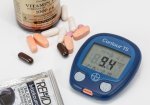Ambulatory Blood Pressure Monitoring
By Hillary Milliband
Ambulatory blood pressure monitoring also known in short as ABPM has been in use and continued development in the last 25 years. It is a method doctors find very useful and important in monitoring a patient's blood pressure on a 24 hour basis.
Blood pressure is measured at regular intervals using a blood pressure cuff. With today's technology the cuff is an automatic blood pressure cuff that automatically inflates and deflates. The method is noninvasive and is a preferred and effective technique for assessing biological, environmental and drug effects on blood pressure. Ambulatory blood pressure monitoring is preferred by doctors for clinical research on a patient over the conventional blood pressure measurement done by home blood pressure monitors because it gives information over and above that which is given by home blood pressure monitors.
ABPM is thought to addresses specific problems that apparently plague the conventional method of taking blood pressure. In particular ABPM eliminates the problem of white coat syndrome a situation in which doctor's office blood pressure numbers are artificially elevated due to anxiety and stress of being in the doctor's office. Ambulatory blood pressure monitoring also deals with another problem known as blood pressure masking.This is when blood pressure is artificially low when in reality an individual has high blood pressure. Further advantages of this approach includes an opportunity to track the effectiveness of particular hypertension medications over a period of 24 hours including any side effects that might be associated with the particular high blood pressure meds. Using this method doctors can also identify patients with resistant hypertension. This gives doctors adequate information to make a decision in as far as a patient's hypertension treatment regimen is concerned.
Another limitation of conventional blood pressure monitoring that is addressed by ABPM is its inability to detect morning hypertension. Save for a few digital blood pressure monitors such as the Omron blood pressure monitor series which can detect morning high blood pressure, most blood pressure monitors used at home and at the doctor's office are only able to detect irregular heartbeat. Detecting morning hypertension requires that blood pressure measurements be taken during a certain time of the morning period. This is easier achieved using the 24 hour ambulatory blood pressure monitoring method. ABPM can also help doctors detect dipping and non-dipping patients as well as those with isolated systolic hypertension and hypotension.
Chronic high blood pressure can not be cured. What doctors seek to do it to keep it controlled and managed. Controlling high blood pressure is extremely important as this prevents end-stage incidences such as stroke, heart attack, heart failure and sometimes loss of sight and other cardiovascular related events. Further hypertension pathophysiology studies shows that if high blood pressure is left unchecked through treatment or lifestyle changes it will result in organ damage. The key organs to be damaged will include kidneys, heart, liver and eyes. kidney damage may lead to renovascular hypertension. It is in this context and understanding that some medical experts have shown through studies that ABPM is an advanced and stronger predictor of cardiovascular morbidity and mortality compared to conventional blood pressure monitoring.
In as much as ABPM has been praised for its effectiveness and superiority to ordinary home blood pressure monitoring it still faces specific challenges and disadvantages. Importantly, technique is not widely used. More doctors and nurses will require training in order to implement it successfully. Further it is not necessarily a favorite for patients. This is because its 24 hour operation nature causes some sleep disturbance to patients who need to wake up or stop working at preset intervals in order to take their blood pressure reading. There is a specific way on how to take blood pressure. Repeated inflation and deflation of the upper arm cuff may result in bruising which is uncomfortable to some patients. This has to be applied on the same arm each time for consistent readings thus raising the risk of bruising.
Ambulatory blood pressure monitoring is currently not for everyone. Doctors agree there are specific individuals who need to be refereed for an ABPM. In particular patients who show resistance to medication will require ABPM. This also include patients with labile blood pressure and patients with persistently elevated blood pressure. Patients with diabetes and cardiovascular disease will also require ABPM just as patients with suspected white coat syndrome. However for white coat syndrome doctors may recommend patients to check own blood pressure at home using digital blood pressure monitors such as Relion, Samsung, Lifesource and others without necessarily going for ABPM. It would appear the use of APBM will continue to increase as technology is developed to make the process less burdensome.
HAVE YOU GOT SOMETHING TO SHARE?
I would like to know your thoughts and comments on issues I have discussed in my article above. Please feel welcome to submit your experience or comments below.
You may also submit a full article if you so wish 200 - 1500 words that will be published on this section of the website with your name.
Return To Articles On Hypertension from Ambulatory Blood Pressure Monitoring
Return To Hypertension Home from Ambulatory Blood Pressure Monitoring
| About Us
(c) All Rights Reserved. 2010-2018


